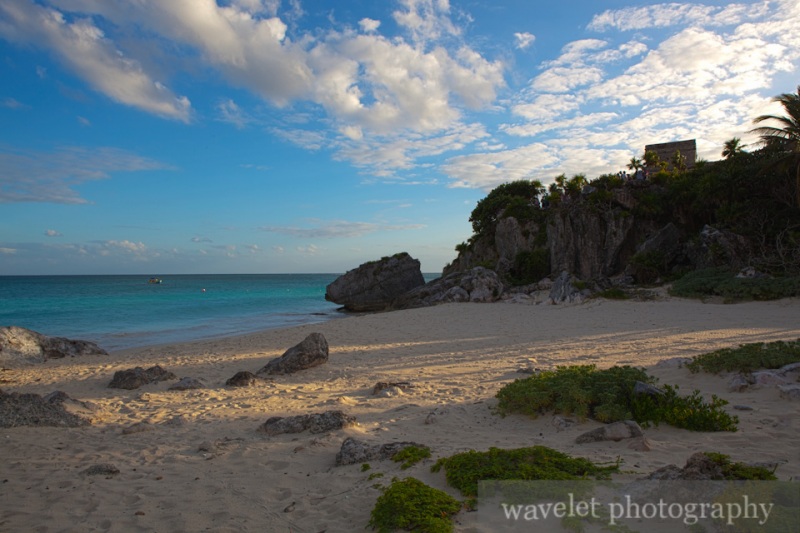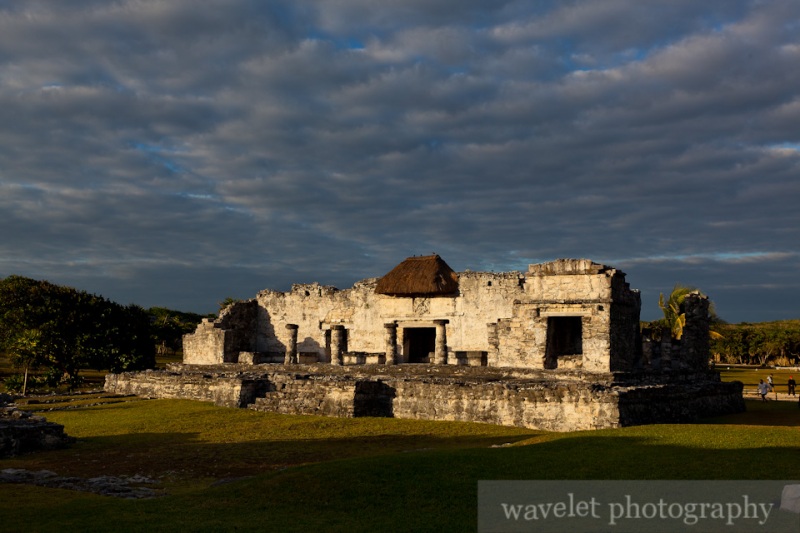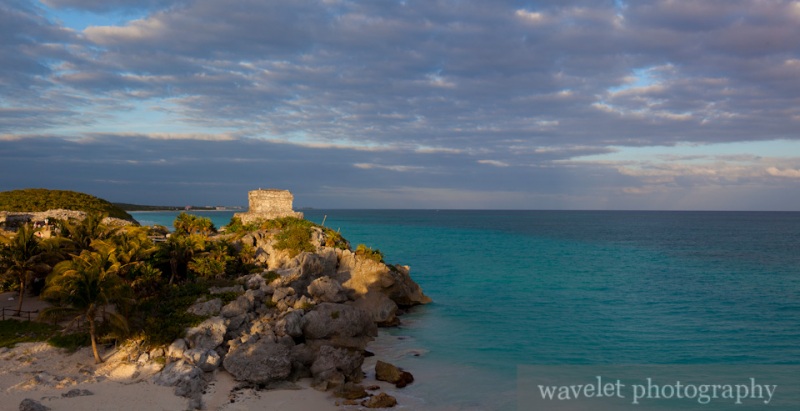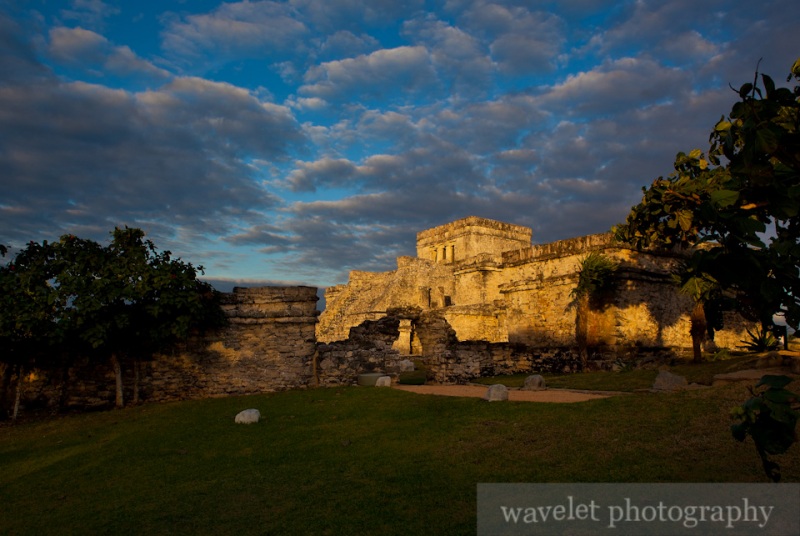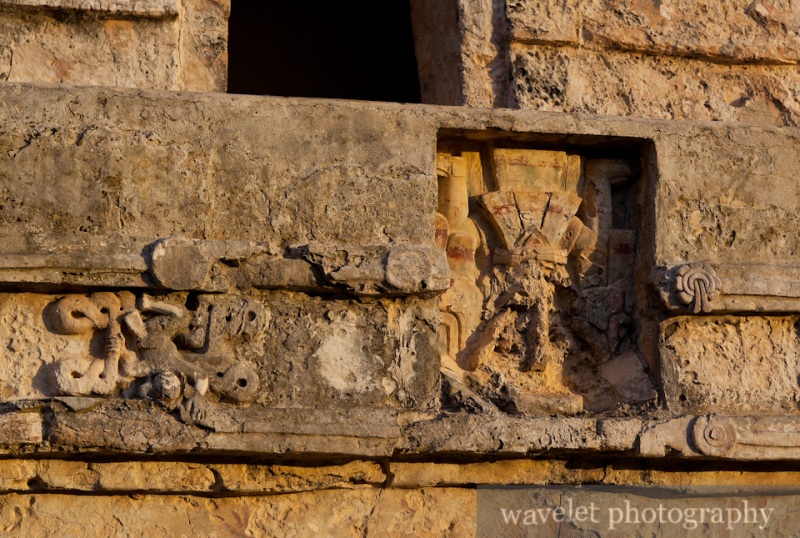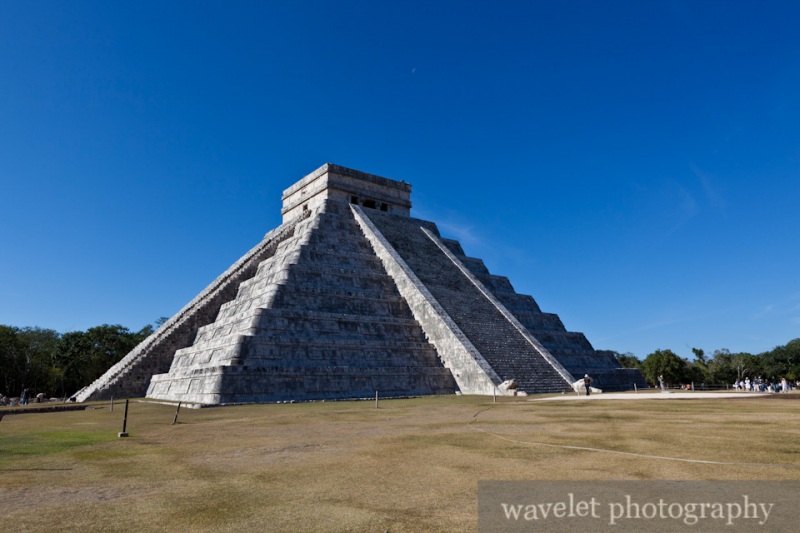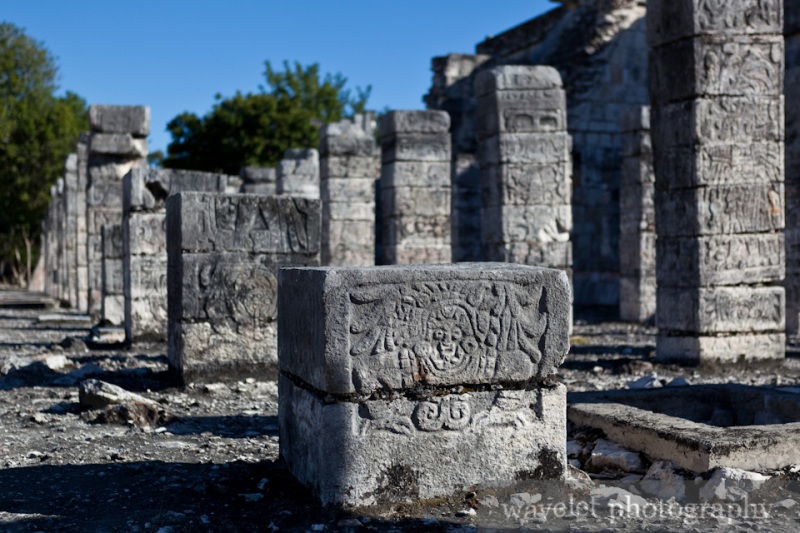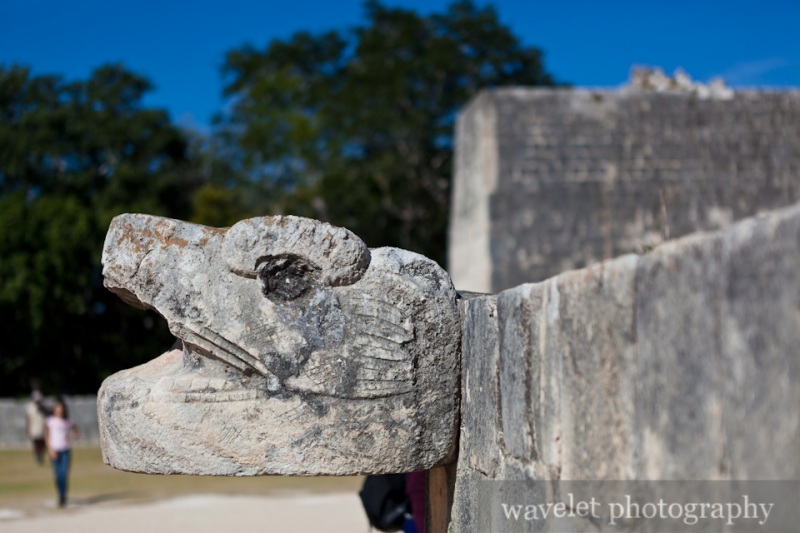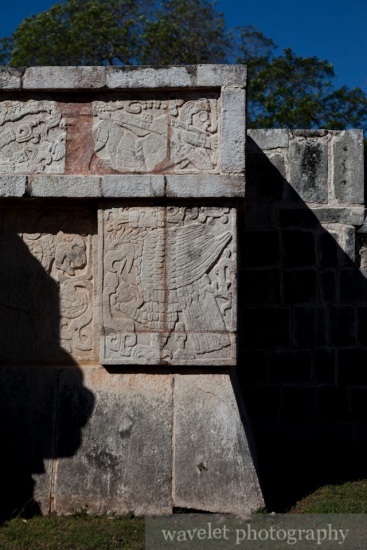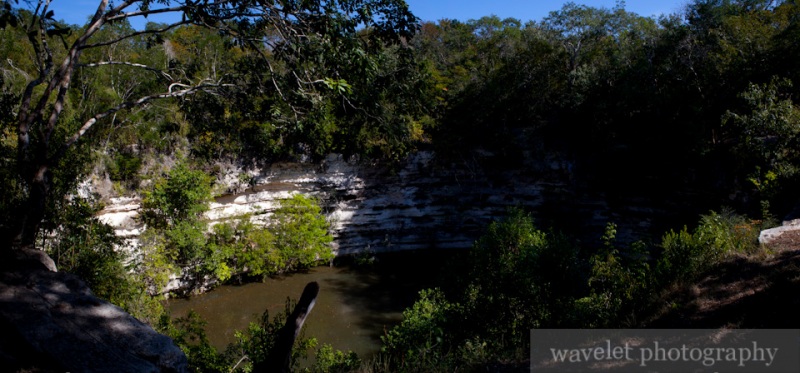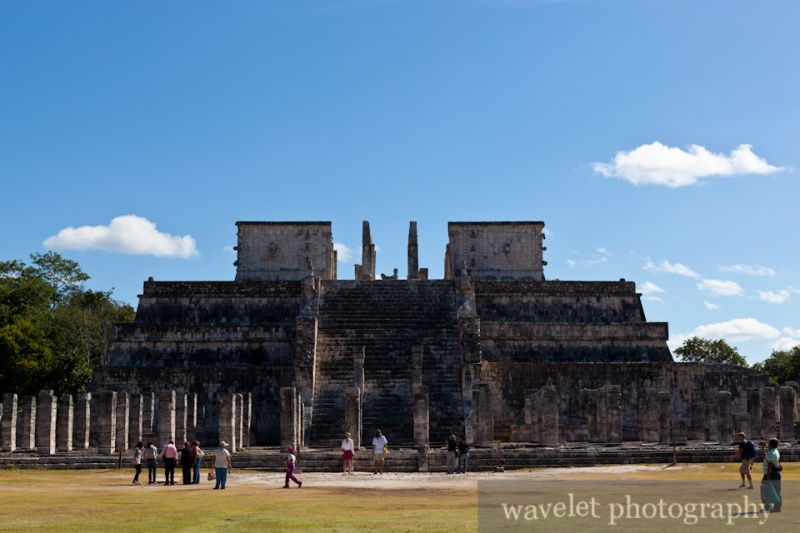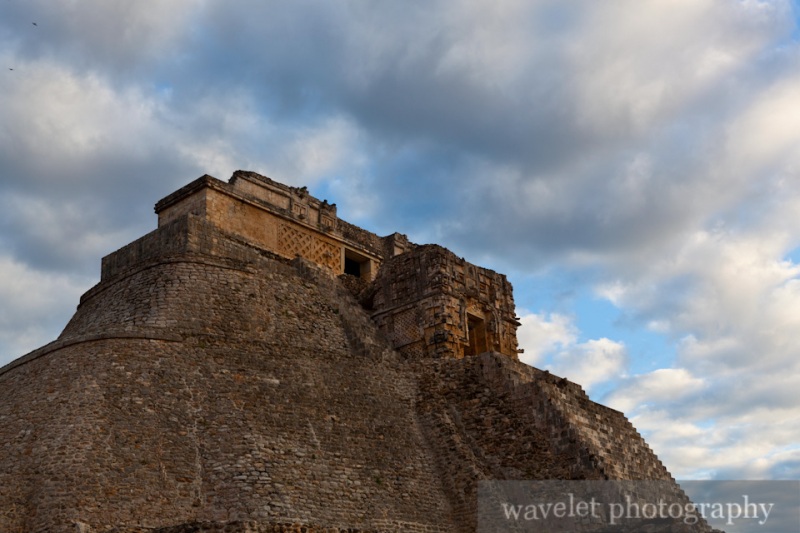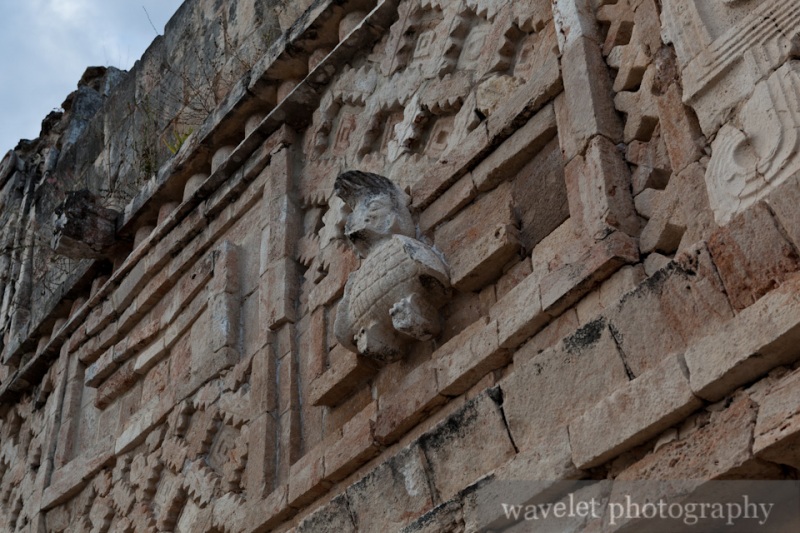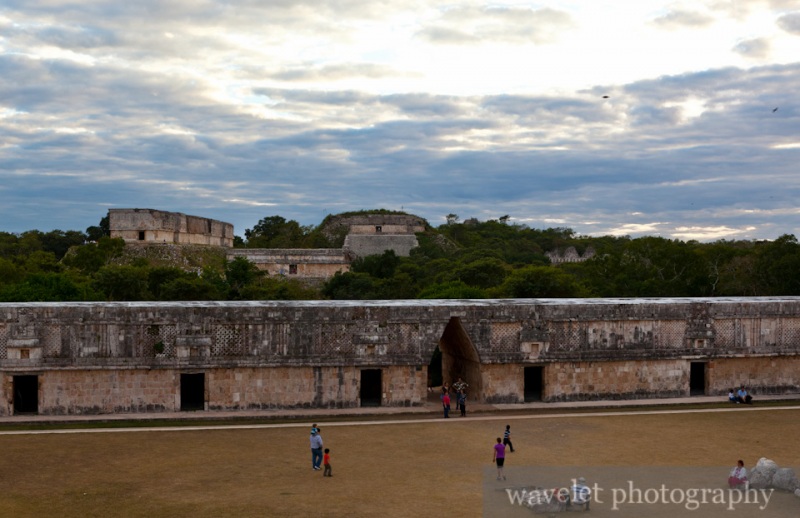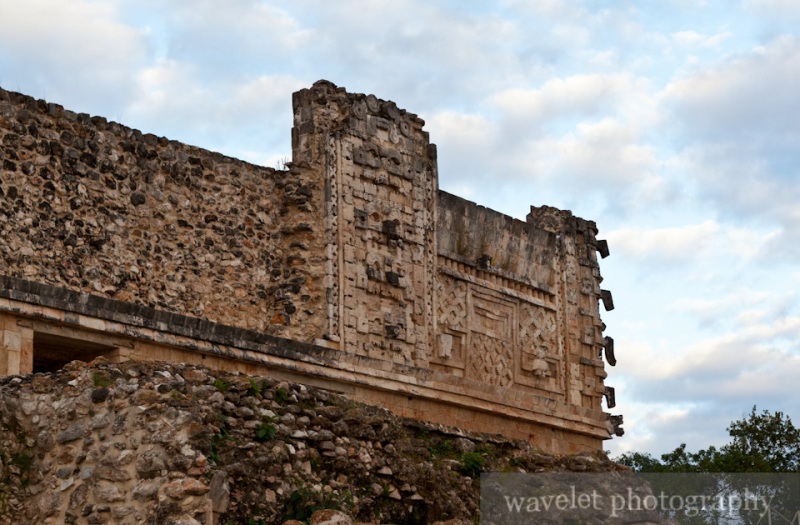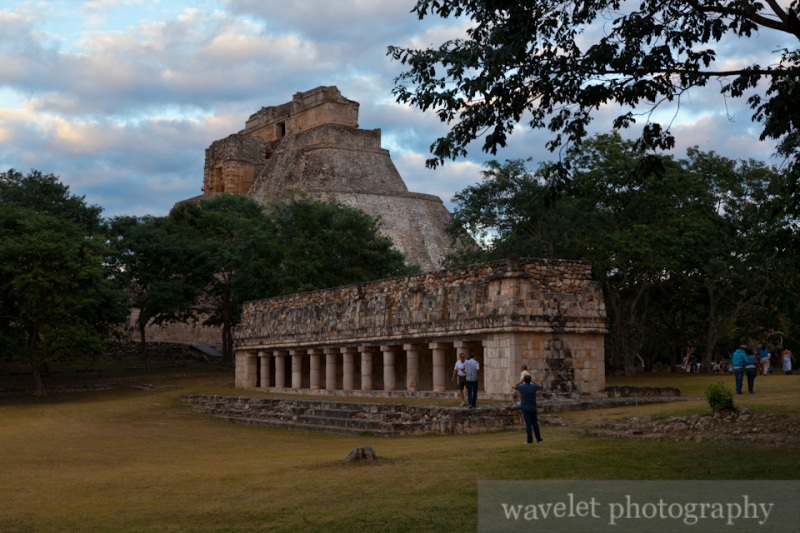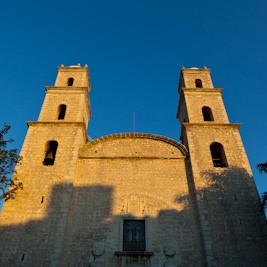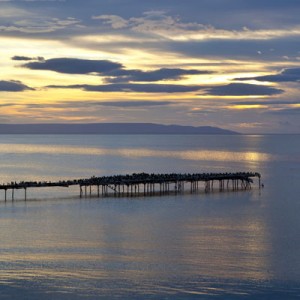Maya civilization was one of the most advanced cultures in the world. It reached its full bloom between 300 and 900 AD. Many cities flourished during this Classic Period in Yucatán Peninsula, which was one of the cultural centers in the region. The civilization declined after this period and cities eventually faded away into the jungles. The reason for their decadence still remains a mystery until today. What left are tens of fascinating ruins throughout the peninsula.
The first ruin we visited was Tulum, 80 miles south of Cancún along the Caribbean coast. This part of the coast is called Riviera Maya. There is only one highway 307 running down the coast. It took us about 2 hours driving from Cancún to Tulum. Playa del Carmen is a lively town at the halfway of the trip. Several theme parks along the way offer activities such as swimming or snorkeling in the underground rivers and touring in the jungle, but we didn’t stop for them.
Tulum is a Maya fortress city on a cliff above the sea. It became an important seaport in the 13th century after the declination of Mayan civilization. Compared to other Maya ruins, Tulum is small and lacks of majestic buildings, however, the stark contrast between the crumbling stone temples against the turquoise Caribbean Sea is an extraordinary sight. There is a small beach between Temple of the Wind and El Castillo. It’s quite popular as many visitors like take a dip in the ocean after seeing the ancient ruin.
Chichén Itzá is at about the middle point between Cancún and Merida. It is the most visited archaeological site in Yucatán Peninsula. After named as one of the New Seven Wonders of the World, it attracted even more tourists. When we got there at late afternoon, hundreds of people still waited in line for the tickets. We decided to first visit Valladolid, the city that we would stay over night, and came back as early as possible the next day morning.
The most prominent architecture in Chichén Itzá is the Pyramid of Kukulkan, 25m (82-ft) high, sitting in the middle of the open area. Not long ago, visitors were allowed to climb the pyramid, but the stairs are indeed steep and narrow, now it is closed to the tourist. Another signature figure of Chichén Itzá is Chac Mool statue, a human figure in reclining position holding a bowl over the stomach. The statue can be seen in several places around the ruin, but the most authentic one is seated on top of Temple of the Warriors that, unfortunately, is also closed to the visitors. There are many myths associated with Chichén Itzá, such as the Red Jaguar, the Sacred Cenote that was filled with sacrifices and human bodies as worship to the god and the snake-shaped shadow over pyramid’s northern stairway on the spring and fall equinox day. We encountered several tour-guides vividly depicted the cruel scenes of Mayan sacrifice rituals. I think they probably learnt them from the movie Apocalypto.
We arrived in Chichen Itza at 9am and left at about 11am. By the afternoon, we were already at Mérida. We pondered between Celestún or Uxmal and decided the best time to use the late afternoon is to see another ruin, Uxmal. However, we made a wrong assumption while driving and wasted an hour on the road. When we got there, it’s 5:30pm and the gate was just closed. We begged the keeper to let us in by telling them we had been driving for 3 hours. Luckily, they opened the gate for us without asking us to pay the admission fee.
Entering the ruin, rising in front of us was the Pyramid of the Magician. It has a oval-shaped base that is unique among the Maya. Many people were clapping their hands at the base. It is said the pyramid would answer in the voice of the sacred bird. Research showed that it is an acoustic effect of any large building with long outdoor stairways, but it might be the intention of ancient Mayans. Behind the pyramid is the Nunnery Quadrangle. It was a government palace and has a lot of small rooms, but the most beautiful is its long intricate facades of carved stone. Unfortunately, we had only 40 minutes in Uxmal because the official started clearing the park for the sound-and-light show in the evening. We didn’t got time to visit the part of the ruin that built on the high land.
